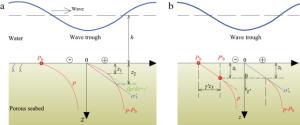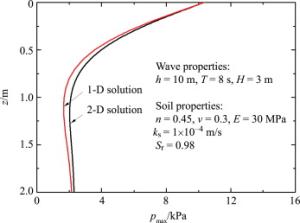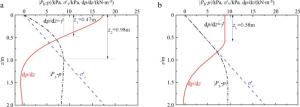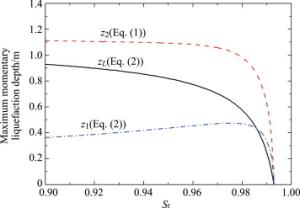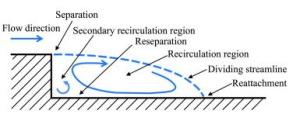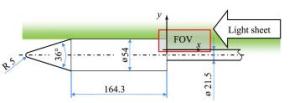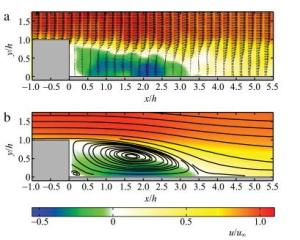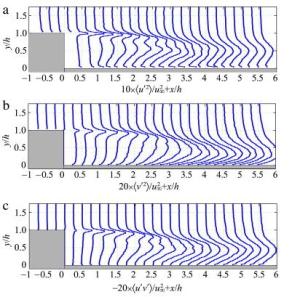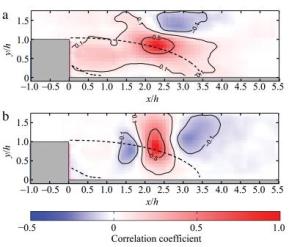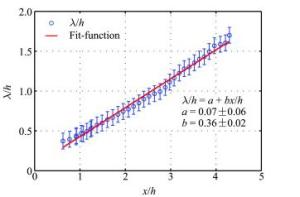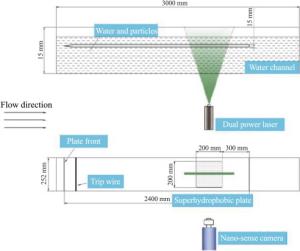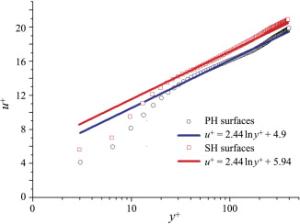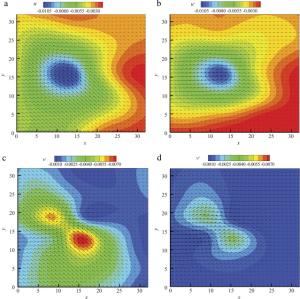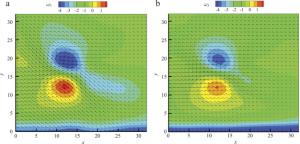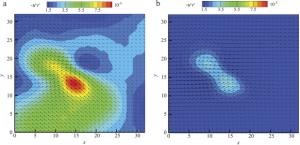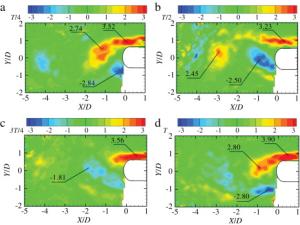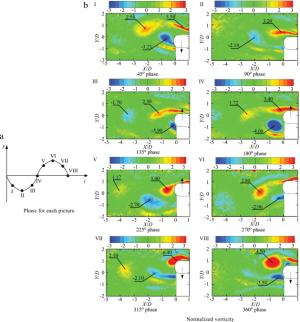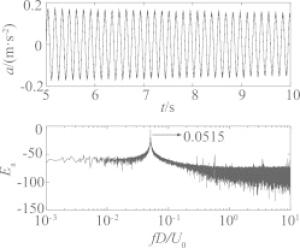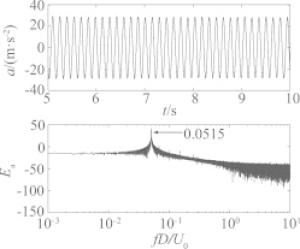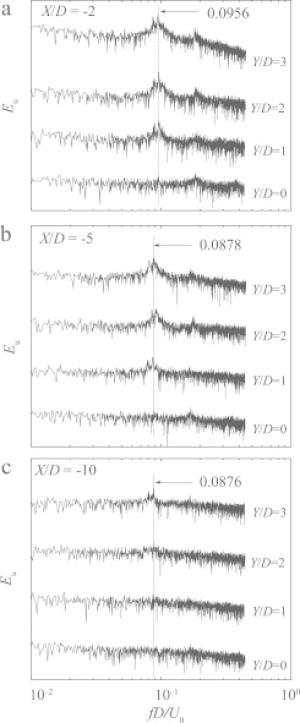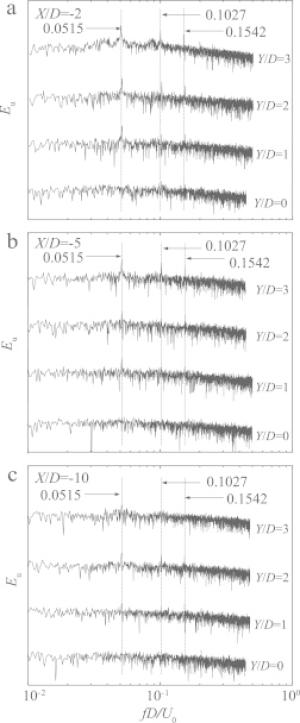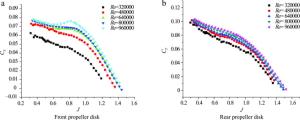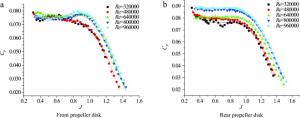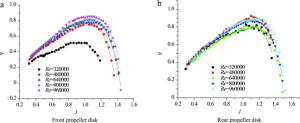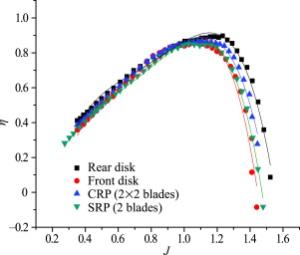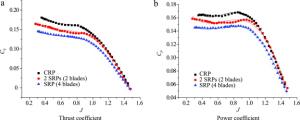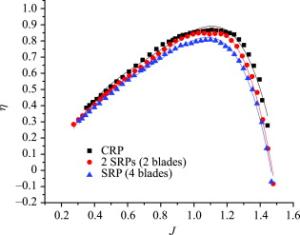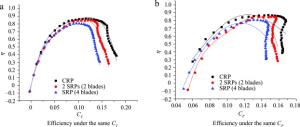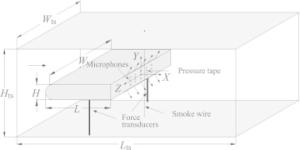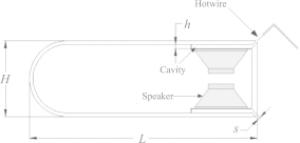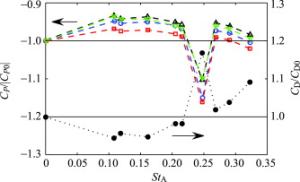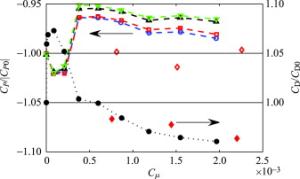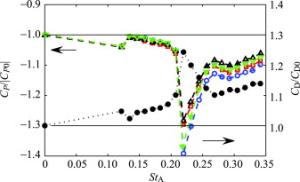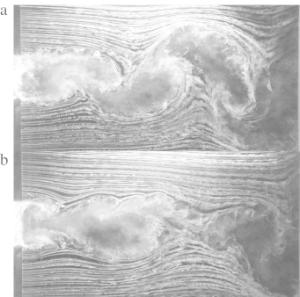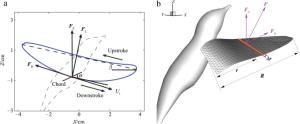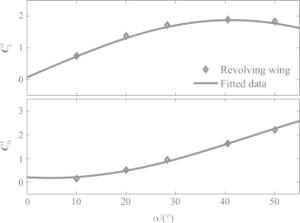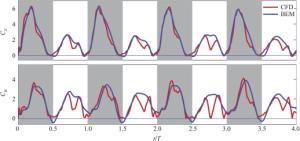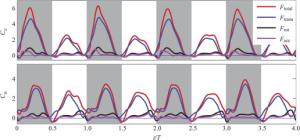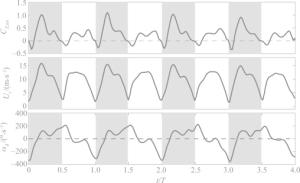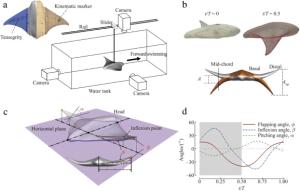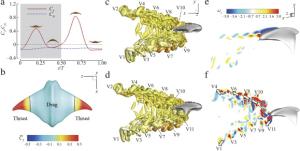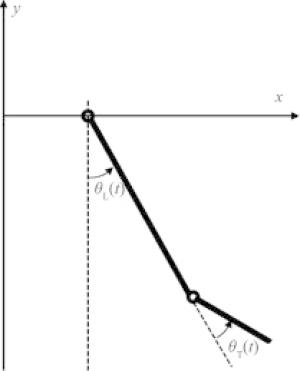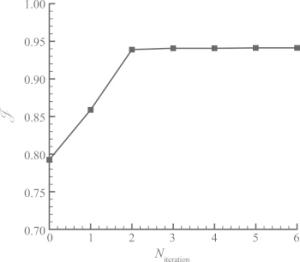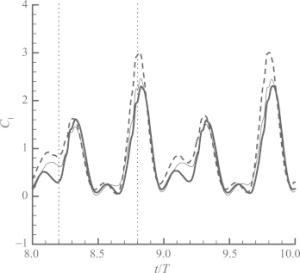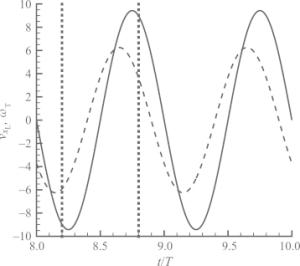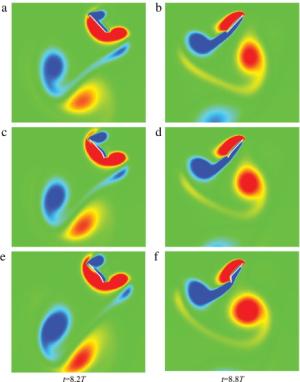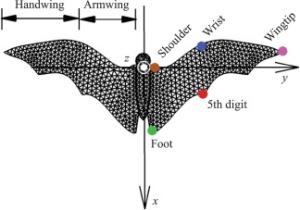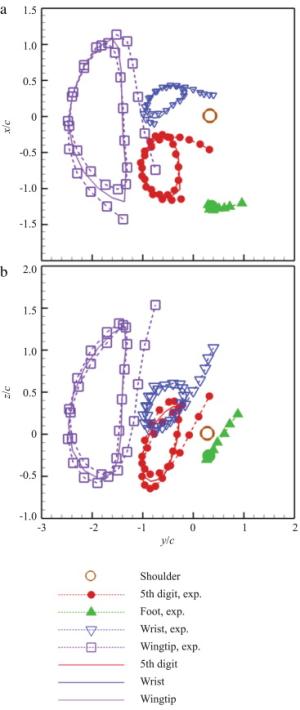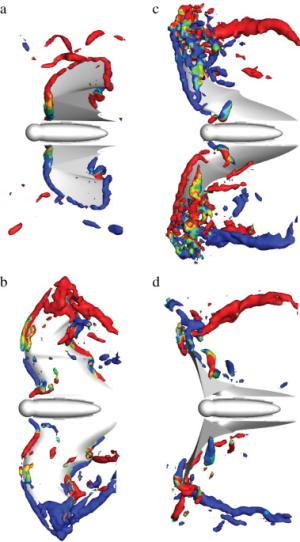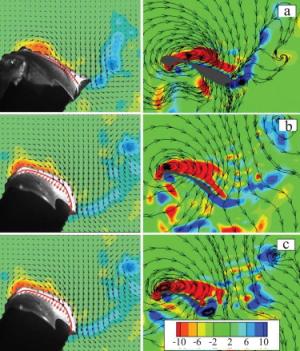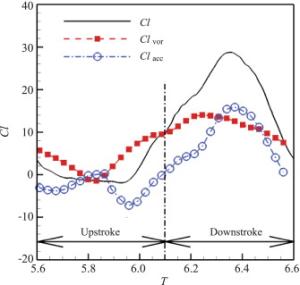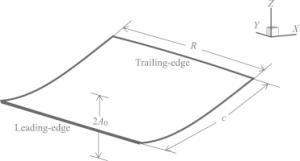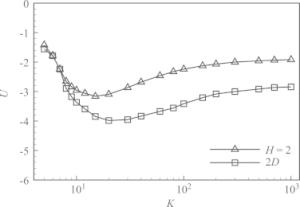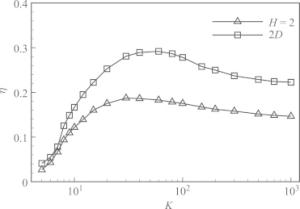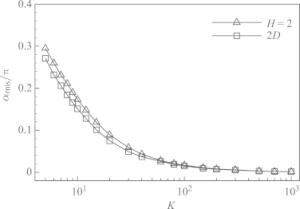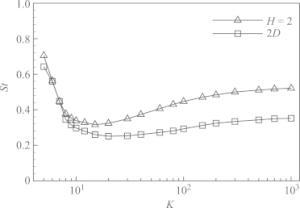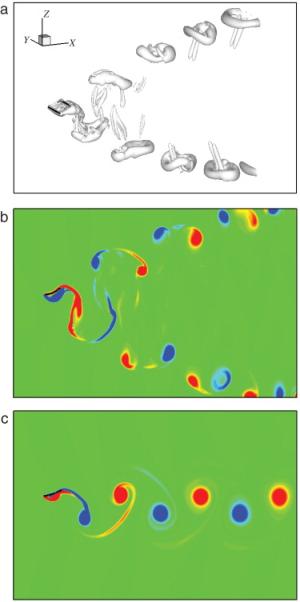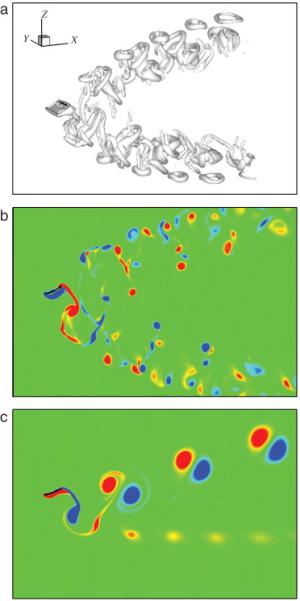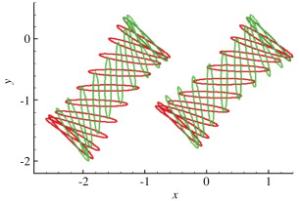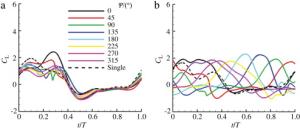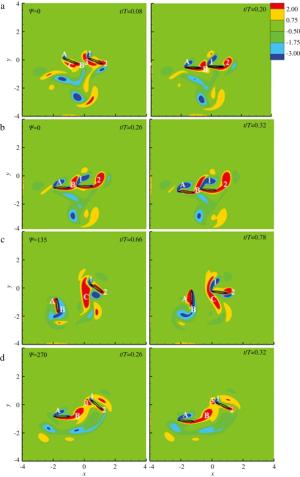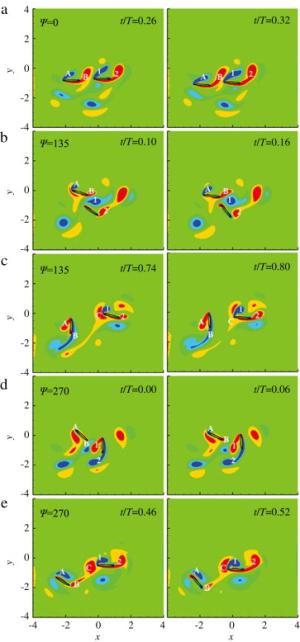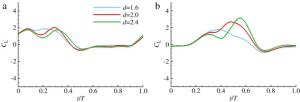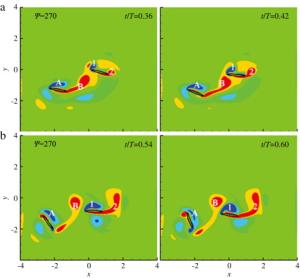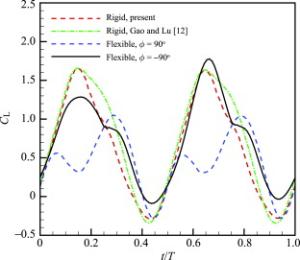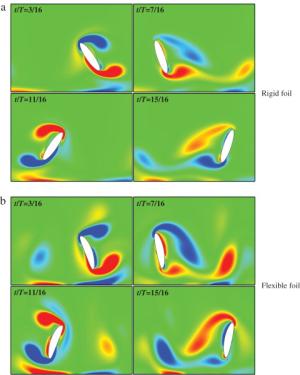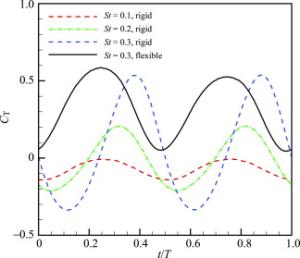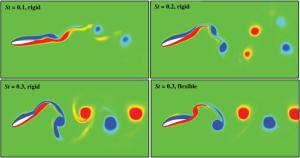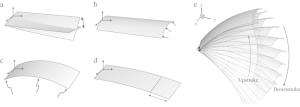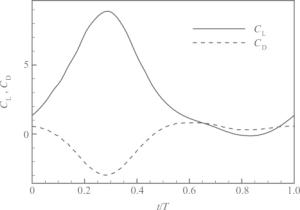Institute of Mechanics,
Chinese Academy of Sciences
2015 Vol.5(1)
column
Display Mode: |
Theoretical and Applied Mechanics Letters 2015, 5(1): 1-4.
doi: 10.1016/j.taml.2015.01.004
Abstract:
The assessment of the wave-induced soil liquefaction plays a key role in the geotechnical design for offshore foundations. The underlying shortcomings of the existing momentary liquefaction criteria are identified and clarified by mechanism analyses and the recent field observations. A modified criterion for the wave-induced momentary liquefaction of a sandy seabed is given to describe the vertical pore-pressure distributions. An improved approximation of the momentary liquefaction depth is further presented. Parametric study of the effects of the saturation degree of soils indicates that this modification is significant for the evaluation of wave-induced momentary liquefaction.
The assessment of the wave-induced soil liquefaction plays a key role in the geotechnical design for offshore foundations. The underlying shortcomings of the existing momentary liquefaction criteria are identified and clarified by mechanism analyses and the recent field observations. A modified criterion for the wave-induced momentary liquefaction of a sandy seabed is given to describe the vertical pore-pressure distributions. An improved approximation of the momentary liquefaction depth is further presented. Parametric study of the effects of the saturation degree of soils indicates that this modification is significant for the evaluation of wave-induced momentary liquefaction.
Theoretical and Applied Mechanics Letters 2015, 5(1): 5-9.
doi: 10.1016/j.taml.2014.12.002
Abstract:
The separating/reattaching flow over an axisymmetric backward-facing step is analyzed experimentally by means of particle image velocimetry (PIV). The main purpose of the measurements is the investigation of the mean flow field as well as of the Reynolds stress distributions at a Mach number of 0.7 and at a Reynolds number of 3.3105 based on the step height. Due to the strong progress of optical flow measurements in the last years it was possible to resolve all flow scales down to 180 m} (1% of the step height) with high precision. Thanks to the high spatial resolution it was found for the first time that the Reynolds stress distribution features a local minimum between the first part of the shear layer and a region inside the recirculation region. This implies a more complex wake dynamics than assumed before.
The separating/reattaching flow over an axisymmetric backward-facing step is analyzed experimentally by means of particle image velocimetry (PIV). The main purpose of the measurements is the investigation of the mean flow field as well as of the Reynolds stress distributions at a Mach number of 0.7 and at a Reynolds number of 3.3105 based on the step height. Due to the strong progress of optical flow measurements in the last years it was possible to resolve all flow scales down to 180 m} (1% of the step height) with high precision. Thanks to the high spatial resolution it was found for the first time that the Reynolds stress distribution features a local minimum between the first part of the shear layer and a region inside the recirculation region. This implies a more complex wake dynamics than assumed before.
Theoretical and Applied Mechanics Letters 2015, 5(1): 10-14.
doi: 10.1016/j.taml.2015.01.003
Abstract:
This study aims at the mechanism of drag reduction in turbulent boundary layer (TBL) with superhydrophobic surface. Comparing the TRPIV measurement results with that of hydrophilic surface, the drag reduction rate over a superhydrophobic surface is approximately 10%. To investigate the characteristics of coherent structure in a drag-reduced TBL with superhydrophobic surface, a modified multi-scale spatial locally-averaged structure function is proposed for detecting coherent structure. The conditional sampling and spatial phase-lock average methods are employed to obtain the topology of physical quantities like the velocity fluctuation, spanwise vorticity, and Reynolds stress during eject and sweep process. The results indicate that the suppression of coherent structure burst in the near-wall region is the key mechanism in reducing the skin friction drag for TBL over superhydrophobic surface.
This study aims at the mechanism of drag reduction in turbulent boundary layer (TBL) with superhydrophobic surface. Comparing the TRPIV measurement results with that of hydrophilic surface, the drag reduction rate over a superhydrophobic surface is approximately 10%. To investigate the characteristics of coherent structure in a drag-reduced TBL with superhydrophobic surface, a modified multi-scale spatial locally-averaged structure function is proposed for detecting coherent structure. The conditional sampling and spatial phase-lock average methods are employed to obtain the topology of physical quantities like the velocity fluctuation, spanwise vorticity, and Reynolds stress during eject and sweep process. The results indicate that the suppression of coherent structure burst in the near-wall region is the key mechanism in reducing the skin friction drag for TBL over superhydrophobic surface.
Theoretical and Applied Mechanics Letters 2015, 5(1): 15-20.
doi: 10.1016/j.taml.2015.01.002
Abstract:
Wake structures and VIV of a spring-supported wide-D-section cylinder were experimentally investigated using an X-wire, a novel phase-locked particle image velocimetry (PIV) and an acceleration sensor at a low speed wind tunnel. Compared with the fixed case, the 2P (two pair) vortex mode as defined by Govardhan and Williamson (2000) rather than S (single vortex) mode exists in the wake. The velocity deficit behind the cylinder is much larger than that of fixed case. The mean drag coefficient increases from 1.42 for the fixed case to 1.64 for the vibrating case. The Reynolds stress presents even distribution and small with increased distance of X/D = -2 to -10. The power spectra density based on accelerator and hot wire data presents a highlight identical. It shows that after a strong interaction the cylinder vibration and the vortex shedding come to a stable state. The vortex shedding is totally locked on and controlled by the cylinder vibration.
Wake structures and VIV of a spring-supported wide-D-section cylinder were experimentally investigated using an X-wire, a novel phase-locked particle image velocimetry (PIV) and an acceleration sensor at a low speed wind tunnel. Compared with the fixed case, the 2P (two pair) vortex mode as defined by Govardhan and Williamson (2000) rather than S (single vortex) mode exists in the wake. The velocity deficit behind the cylinder is much larger than that of fixed case. The mean drag coefficient increases from 1.42 for the fixed case to 1.64 for the vibrating case. The Reynolds stress presents even distribution and small with increased distance of X/D = -2 to -10. The power spectra density based on accelerator and hot wire data presents a highlight identical. It shows that after a strong interaction the cylinder vibration and the vortex shedding come to a stable state. The vortex shedding is totally locked on and controlled by the cylinder vibration.
Theoretical and Applied Mechanics Letters 2015, 5(1): 21-24.
doi: 10.1016/j.taml.2015.01.001
Abstract:
Aerodynamic performance of the high-altitude propeller, especially the counter rotation effects, is experimentally studied. Influences of different configurations on a stratospheric airship, included 2-blade counter-rotating propeller (CRP), dual 2-blade single rotation propellers (SRPs) and 4-blade SRP, are also indicated. This research indicates that the effect of counter rotation can greatly improve the efficiency. It shows that the CRP configuration results in a higher efficiency than the dual 2-blade SRPs configuration or 4-blade SRP configuration under the same advance ratio, and the CRP configuration also gains the highest efficiency whether under the situation of providing the same trust or absorbing the same power. It concludes that, for a stratospheric airship, the CRP configuration is better than the multiple SRPs configuration or a multi-blade SRP one.
Aerodynamic performance of the high-altitude propeller, especially the counter rotation effects, is experimentally studied. Influences of different configurations on a stratospheric airship, included 2-blade counter-rotating propeller (CRP), dual 2-blade single rotation propellers (SRPs) and 4-blade SRP, are also indicated. This research indicates that the effect of counter rotation can greatly improve the efficiency. It shows that the CRP configuration results in a higher efficiency than the dual 2-blade SRPs configuration or 4-blade SRP configuration under the same advance ratio, and the CRP configuration also gains the highest efficiency whether under the situation of providing the same trust or absorbing the same power. It concludes that, for a stratospheric airship, the CRP configuration is better than the multiple SRPs configuration or a multi-blade SRP one.
Theoretical and Applied Mechanics Letters 2015, 5(1): 25-28.
doi: 10.1016/j.taml.2015.01.005
Abstract:
Open-loop flow control method was used to affect the development of a turbulent wake behind a D-shaped bluff body. Loud speakers were embedded inside the bluff body to produce two zero-net-mass-flux jets through 2 mm-wide span-wise slots located along the upper and lower edges on the rear wall. The drag forces for different actuation amplitudes (Cμ, the ratio between the momentum of the actuating jets and the moment deficit caused by the bluff body) and frequencies (StA) were examined. The effects of the phase difference in the two jets (0 and π) were also studied. It was found that when Cμ was 0.1%, a drag reduction up to 5% was achieved when the velocities of the two jets varied in phase at a frequency of StA = 0.16. When the velocities of the two jets varied π out of phase, significant drag increase was observed.
Open-loop flow control method was used to affect the development of a turbulent wake behind a D-shaped bluff body. Loud speakers were embedded inside the bluff body to produce two zero-net-mass-flux jets through 2 mm-wide span-wise slots located along the upper and lower edges on the rear wall. The drag forces for different actuation amplitudes (Cμ, the ratio between the momentum of the actuating jets and the moment deficit caused by the bluff body) and frequencies (StA) were examined. The effects of the phase difference in the two jets (0 and π) were also studied. It was found that when Cμ was 0.1%, a drag reduction up to 5% was achieved when the velocities of the two jets varied in phase at a frequency of StA = 0.16. When the velocities of the two jets varied π out of phase, significant drag increase was observed.
Theoretical and Applied Mechanics Letters 2015, 5(1): 29-32.
doi: 10.1016/j.taml.2014.12.003
Abstract:
A quasi-steady model describing aerodynamics of hovering Ruby-throated hummingbirds is presented to study extent of the low-order model in representing the flow physics of the bird and also to separately quantify the forces from the translational, rotational and acceleration effects. Realistic wing kinematics are adopted and the model is calibrated against CFD simulations of a corresponding revolving-wing model. The results show that the quasi-steady model is able to predict overall lift production reasonably well but fails to capture detailed force oscillations. The downstroke-upstroke asymmetry is consistent with that in the previous CFD study. Further analysis shows that significant rotational force is produced during mid-stroke rather than wing reversal.
A quasi-steady model describing aerodynamics of hovering Ruby-throated hummingbirds is presented to study extent of the low-order model in representing the flow physics of the bird and also to separately quantify the forces from the translational, rotational and acceleration effects. Realistic wing kinematics are adopted and the model is calibrated against CFD simulations of a corresponding revolving-wing model. The results show that the quasi-steady model is able to predict overall lift production reasonably well but fails to capture detailed force oscillations. The downstroke-upstroke asymmetry is consistent with that in the previous CFD study. Further analysis shows that significant rotational force is produced during mid-stroke rather than wing reversal.
Theoretical and Applied Mechanics Letters 2015, 5(1): 33-36.
doi: 10.1016/j.taml.2014.12.004
Abstract:
This paper describes a computational study of the hydrodynamics of a ray-inspired underwater vehicle conducted concurrently with experimental measurements. High-resolution stereo-videos of the vehicle's fin motions during steady swimming are obtained and used as a foundation for developing a high fidelity geometrical model of the oscillatory fin. A Cartesian grid based immersed boundary solver is used to examine the flow fields produced due to these complex artificial pectoral fin kinematics. Simulations are carried out at a smaller Reynolds number in order to examine the hydrodynamic performance and understand the resultant wake topology. Results show that the vehicle's fins experience large spanwise inflexion of the distal part as well as moderate chordwise pitching during the oscillatory motion. Most thrust force is generated by the distal part of the fin, and it is highly correlated with the spanwise inflexion. Two sets of inter-connected vortex rings are observed in the wake right behind each fin. Those vortex rings induce strong backward flow jets which are mainly responsible for the fin thrust generation.
This paper describes a computational study of the hydrodynamics of a ray-inspired underwater vehicle conducted concurrently with experimental measurements. High-resolution stereo-videos of the vehicle's fin motions during steady swimming are obtained and used as a foundation for developing a high fidelity geometrical model of the oscillatory fin. A Cartesian grid based immersed boundary solver is used to examine the flow fields produced due to these complex artificial pectoral fin kinematics. Simulations are carried out at a smaller Reynolds number in order to examine the hydrodynamic performance and understand the resultant wake topology. Results show that the vehicle's fins experience large spanwise inflexion of the distal part as well as moderate chordwise pitching during the oscillatory motion. Most thrust force is generated by the distal part of the fin, and it is highly correlated with the spanwise inflexion. Two sets of inter-connected vortex rings are observed in the wake right behind each fin. Those vortex rings induce strong backward flow jets which are mainly responsible for the fin thrust generation.
Theoretical and Applied Mechanics Letters 2015, 5(1): 37-40.
doi: 10.1016/j.taml.2014.12.005
Abstract:
It is important to understand the impact of wing-morphing on aerodynamic performance in the study of flapping-wing flight of birds and insects. We use a flapping plate hinged with a trailing-edge flap as a simplified model for flexible/morphing wings in hovering. The trailing-edge flapping motion is optimized by an adjoint-based approach. The optimized configuration suggests that the trailing-edge flap can substantially enhance the overall lift. Further analysis indicates that the lift enhancement by the trailingedge flapping is from the change of circulation in two ways: the local circulation change by the rotational motion of the flap, and the modification of vortex shedding process by the relative location between the trailing-edge flap and leading-edge main plate.
It is important to understand the impact of wing-morphing on aerodynamic performance in the study of flapping-wing flight of birds and insects. We use a flapping plate hinged with a trailing-edge flap as a simplified model for flexible/morphing wings in hovering. The trailing-edge flapping motion is optimized by an adjoint-based approach. The optimized configuration suggests that the trailing-edge flap can substantially enhance the overall lift. Further analysis indicates that the lift enhancement by the trailingedge flapping is from the change of circulation in two ways: the local circulation change by the rotational motion of the flap, and the modification of vortex shedding process by the relative location between the trailing-edge flap and leading-edge main plate.
Theoretical and Applied Mechanics Letters 2015, 5(1): 41-44.
doi: 10.1016/j.taml.2015.01.006
Abstract:
This letter describes numerical simulation of the unsteady flow over a slow-flying bat by using the immersed boundary method based on the measured bat wing geometry and kinematics. The main vortical structures around the bat flapping wings are identified, illuminating the lift-generating role of the leadingedge vortices generated mainly in the downstroke. Furthermore, the lift decomposition indicates that the vortex lift has the dominant contribution to the time-averaged lift and the lift associated with the fluid acceleration has the relatively moderate effect.
This letter describes numerical simulation of the unsteady flow over a slow-flying bat by using the immersed boundary method based on the measured bat wing geometry and kinematics. The main vortical structures around the bat flapping wings are identified, illuminating the lift-generating role of the leadingedge vortices generated mainly in the downstroke. Furthermore, the lift decomposition indicates that the vortex lift has the dominant contribution to the time-averaged lift and the lift associated with the fluid acceleration has the relatively moderate effect.
Theoretical and Applied Mechanics Letters 2015, 5(1): 45-48.
doi: 10.1016/j.taml.2015.02.001
Abstract:
The propulsive performance of two- and three-dimensional (2D and 3D) flapping flexible plates in a fluid at rest is investigated by a finite element method for the plate motion and an immersed boundary-lattice Boltzmann method for the fluid flow. We consider a model that as the leading-edge of the plate takes a vertical oscillation, the entire plate moves freely due to the fluid–structure interaction. The effects of flexibility on the dynamics of the 2D and 3D flapping plates are investigated. It is found that a suitable flexibility is benefit for improving the propulsive performance. The results obtained in this study provide physical insight into the understanding of the dynamics of the flapping-based locomotion.
The propulsive performance of two- and three-dimensional (2D and 3D) flapping flexible plates in a fluid at rest is investigated by a finite element method for the plate motion and an immersed boundary-lattice Boltzmann method for the fluid flow. We consider a model that as the leading-edge of the plate takes a vertical oscillation, the entire plate moves freely due to the fluid–structure interaction. The effects of flexibility on the dynamics of the 2D and 3D flapping plates are investigated. It is found that a suitable flexibility is benefit for improving the propulsive performance. The results obtained in this study provide physical insight into the understanding of the dynamics of the flapping-based locomotion.
Theoretical and Applied Mechanics Letters 2015, 5(1): 49-54.
doi: 10.1016/j.taml.2015.01.007
Abstract:
Two tandem flapping wings in viscous flow were modeled by using the immersed boundary method for exploration of the aerodynamics of dragonfly in hovering flight. Interaction between the forewing and the hindwing, and its effect on the lift forces, were examined by varying the phase difference of the wing motions and the inter-distance of the two wings. Two vortex interaction modes were identified at different phase differences and inter-distances, which give rise to significant variations of the lift forces. The first interaction mode increases the lift of the forewing and the second one enhances the lift of the hindwing. The two modes occur at different time during a flapping period and have different influence on the lift of wings as the phase difference varies.
Two tandem flapping wings in viscous flow were modeled by using the immersed boundary method for exploration of the aerodynamics of dragonfly in hovering flight. Interaction between the forewing and the hindwing, and its effect on the lift forces, were examined by varying the phase difference of the wing motions and the inter-distance of the two wings. Two vortex interaction modes were identified at different phase differences and inter-distances, which give rise to significant variations of the lift forces. The first interaction mode increases the lift of the forewing and the second one enhances the lift of the hindwing. The two modes occur at different time during a flapping period and have different influence on the lift of wings as the phase difference varies.
Theoretical and Applied Mechanics Letters 2015, 5(1): 55-58.
doi: 10.1016/j.taml.2015.01.008
Abstract:
A coupled immersed boundary-lattice Boltzmann method (IB-LBM) is introduced to solve biomimetic problems. Compared to the conventional IB-LBM, the strict satisfaction of no-slip boundary condition is implemented in the current method. Consequently, the phenomenon of flow penetration that is frequently observed in the conventional IB-LBM is fully prevented, and subsequently the force on the boundary can be calculated more accurately. This feature is of importance for the simulation of biomimetic problems. Moreover, by applying the relationship between the velocity correction and forcing term, the boundary force can be calculated easily. Several biomimetic problems are then simulated. Based on the good agreement between the current results and those in the literature, it may be concluded that the present IB-LBM has the capability to handle various biomimetic problems.
A coupled immersed boundary-lattice Boltzmann method (IB-LBM) is introduced to solve biomimetic problems. Compared to the conventional IB-LBM, the strict satisfaction of no-slip boundary condition is implemented in the current method. Consequently, the phenomenon of flow penetration that is frequently observed in the conventional IB-LBM is fully prevented, and subsequently the force on the boundary can be calculated more accurately. This feature is of importance for the simulation of biomimetic problems. Moreover, by applying the relationship between the velocity correction and forcing term, the boundary force can be calculated easily. Several biomimetic problems are then simulated. Based on the good agreement between the current results and those in the literature, it may be concluded that the present IB-LBM has the capability to handle various biomimetic problems.
Theoretical and Applied Mechanics Letters 2015, 5(1): 59-61.
doi: 10.1016/j.taml.2015.01.009
Abstract:
Different from birds and insects, bats have complex wing-deformation capacity to generate high aerodynamic forces. In flight, the actively morphing of bat wing includes the twisting from wing root to wing tip, the cambering along the chordwise direction, the bending along the spanwise direction and the wing area-changing caused by the stretch and retraction of the wingspan. It was found that the high thrust and lift required in bat flight are dependent on the wing twisting and cambering respectively. Moreover, the integrated wing-morphing generates the aerodynamic lift and thrust mainly during the downstroke and almost negligible forces during the upstroke. The wing area-changing and bending can be used to amplify the positive forces in the downstroke duration and reduce the negative forces in the upstroke duration.
Different from birds and insects, bats have complex wing-deformation capacity to generate high aerodynamic forces. In flight, the actively morphing of bat wing includes the twisting from wing root to wing tip, the cambering along the chordwise direction, the bending along the spanwise direction and the wing area-changing caused by the stretch and retraction of the wingspan. It was found that the high thrust and lift required in bat flight are dependent on the wing twisting and cambering respectively. Moreover, the integrated wing-morphing generates the aerodynamic lift and thrust mainly during the downstroke and almost negligible forces during the upstroke. The wing area-changing and bending can be used to amplify the positive forces in the downstroke duration and reduce the negative forces in the upstroke duration.
 Submit a Paper
Submit a Paper
 Subscription
Subscription
News
MORE+
Call for Papers
MORE+
- Crossing-Mechanics Driven by Big Data
- Machine learning in the fluid mechanics research of wind energy
- Mechanics of Origami/Kirigami structures and metamaterials
- New insights and perspectives on impact biomechanics for human tissues: from injury prevention, protection to protective equipment
- Environmental Mechanics for Extreme Natural Events



